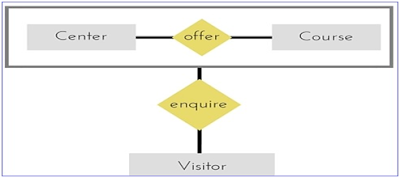Enhanced Entity Relationship (EER) Model is a high level data model which is an extension to original Entity Relationship (ER) model. EER Models supports more details design. EER Modeling emerged as a solution for modeling highly complex databases.
As the complexity of data increased day to day, it became more and more difficult to use the traditional ER Model for database modeling. Hence some enhancements were made to the existing ER Model to make it able to handle the complex applications better.
Hence, as part of the Enhanced ER Model, along with other improvements, three new concepts were added to the existing ER Model, they were:
Generalization
Generalization is a bottom-up approach in which two lower level entities combine to form a higher level entity. In generalization, the higher level entity can also combine with other lower level entities to make further higher level entity. Here sub-classes are combined to form a super-class.
Example: Saving and Current account types entities can be generalized and an entity with name Account can be created, which covers both.
Specialization
Specialization is opposite to Generalization. It is a top-down approach in which one higher level entity can be broken down into two lower level entity. In specialization, a higher level entity may not have any lower-level entity sets, it's possible.
Example: Student entity can be specialized and can be divided into two entities with name Ex-Student and Current_Student.
Aggregation
Aggregation is a process when relation between two entities is treated as a single entity.
Example: In the diagram below, the relationship between Center and Course together, is acting as an Entity, which is in relationship with another entity Visitor. Now in real world, if a Visitor or a Student visits a Coaching Center, he/she will never enquire about the center only or just about the course, rather he/she will ask enquire about both.







No comments:
Post a Comment